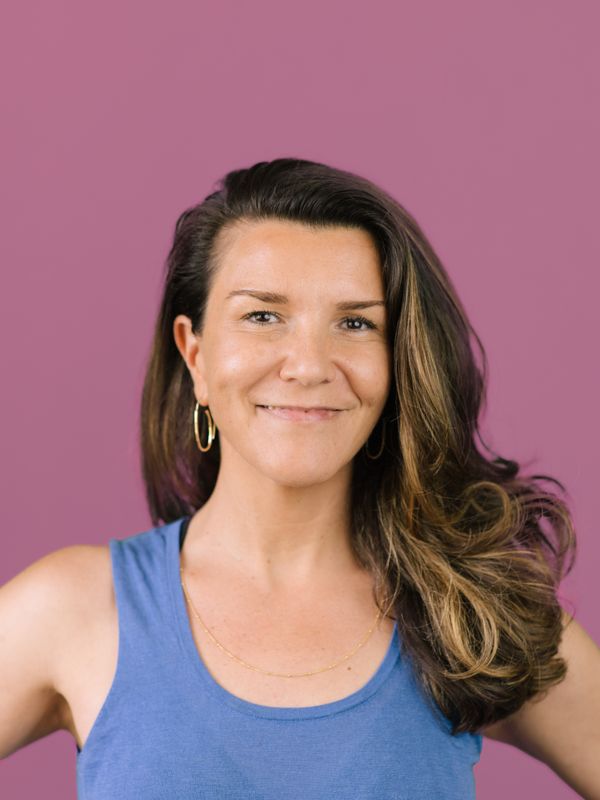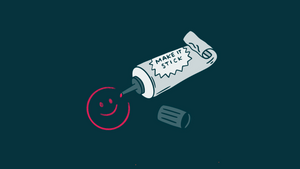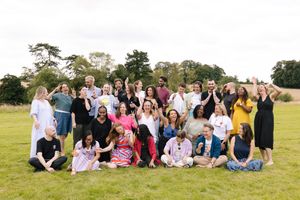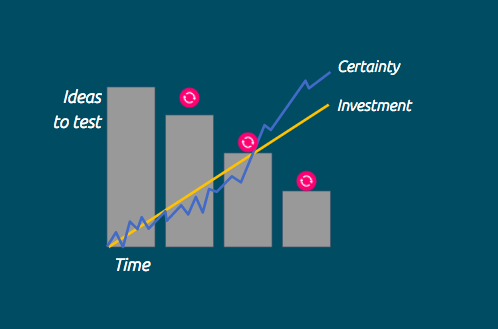
Brink has a long genesis of dinner parties, bottles of wine and conversation over years of friendship between Abi and I. The good thing about that (apart from the food and wine which is typically rather great) is that we had a really solid basis of 5 beliefs upon which to build Brink’s proposition.
There’s loads more to say about each of these, but here’s an introduction to the way we think and see things. These five beliefs underpin everything we do today.
1. The 70/20/10 Golden Ratio
We believe in Harvard’s Golden Ratio: spending 70% of time and money on improving core business, 20% on adjacencies and 10% on inventing the future. The work Harvard has done demonstrating that that today’s 10% becomes tomorrow’s 70% is well documented. We also believe that the imperative for the ’10’ has never been more urgent, nor have our typical business practises ever been more unfit for that purpose. That’s why Brink only works on the 10% i.e. we turn small bets into positive return.
The thing we believe is often overlooked is that 70/20/10 each require different kinds of management. For businesses that are working from the 70 and focussing on improving their core business, the idea of small bets might feel haphazard or impossible to manage accountability, but that’s not true, it just requires a different kind of accountability. Without accountability you end up with random acts of innovation.

2. For the 10% to work it needs to be accountable
There are two kinds of accountability Brink focusses on: brand and financial. For brand, we need to make sure that we don’t end up with crazy vapourware that could have anyone’s logo on it. We ask:
- Would your biggest fans sniff it out immediately?
- Would it feel as legitimate with ‘Google’ or any other brand logo on the bottom right?
- What do you have unique permission to do?
We work with our clients to get clear on what is uniquely theirs and then… double down on ideas that deeply resonate and kill ideas that don’t.
The financial accountability bit is simple, it’s turning ideas into quantitative experiments that we invest more and more as we grow more and more certain. We accept that we don’t know for sure if an idea is going to catch fire so we work with our teams in learning Sprints to course correct and allow serendipity to be woven into what we do — all with an emphasis on learning.
We test in Lean terms, using cost-effective, insight rich MVPs or pretotypes to increase the velocity of our learning about what works. Not only is this strategically sound, it’s an important cultural step for organisations that skew heavily ‘left brain’, to move quickly from qualitative insight to quantitative evidence.
3. Thinking about ‘where the puck will be’ snaps us out of incrementalism
Without an ambitious vision, all teams have to anchor their work is today’s mental models with incrementalism as the result. We have a well rehearsed methodology for thinking backwards (backcasting) from the near future to get teams fired up by the imperative to invent. By aligning around ‘where the puck will be’ we are able to consider the strategies or plays that will serve us best in the future. This Thinking Backwards is typically the first stage of our work with a client and ends with an ‘innovation thesis’ or key areas we all believe we need to focus our work on — again, no random acts of innovation and no incoherent thinking that could be dismissed as pie the sky.
In the past these have been anything from a half day workshop, a meal with futurologists and study tour of innovation in high stakes environments like Nepal. They all work, but it’s typically more powerful to get out of one’s bubble and go see.
4. Invention doesn’t endure without an enabling environment
Brink is founded by an innovation coach (that’s me) and an organisational psychologist (that’s Abi) — our firm is the answer to the question: what could a coach and psychologist do differently from the other firms out there?
We believe that most of our clients know HCD, lean startup and other innovation methods (we are method agnostic), but method isn’t enough for innovation to endure. Endurance requires the right mindset and enabling environment.
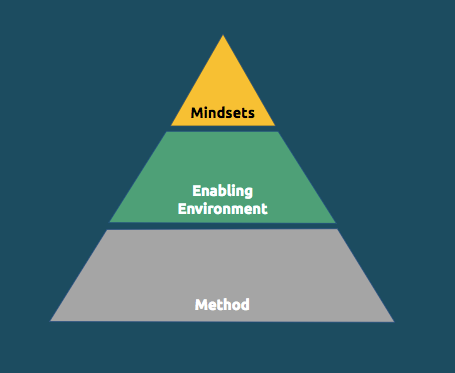
For us this is a kind of Maslow’s Hierarchy of innovation, with method at the bottom, and mindset at the top.
Many organisations have mantras written on the walls but don’t live up to those mantras in practise. We give our clients a lot of tough love on this front and work with them to get real on incentives, really (truly) reframing failure as insight and finding brand appropriate ways to democratise where ideas come from.
Follow our stories and interviews with innovation leaders and how they create environments that increase the velocity of ideas reaching the market.
5. Invention needs the right mindset
For generations leaders have been taught to be decisive, clear and certain. But the mindset best placed to flourish in complexity and uncertainty isn’t clear or certain at all. Instead, navigating uncertainty requires a ‘go see’ humility, active listening and an ability to let go of our own ideas that many of us find counterintuitive, if not impossible. Often this messy, human stuff is what lets great teams down.
Our work on Innovation Mindsetting is gathering and sharing ways to overcome everything we’ve been taught in order to cultivate an innovation mindset.
To make our clients think (and enhance our own thinking), we host dinners in groups and facilitate a discussion around answers to 42 questions — which we have in a pack of Mindsetting cards. So far, we’ve had dinner with Kodak, Nesta, Unicef, Accenture and Facebook Ventures’ very first cohort.
What do you think? Do these beliefs resonate for you? We’d love to hear from you, especially if you disagree.

